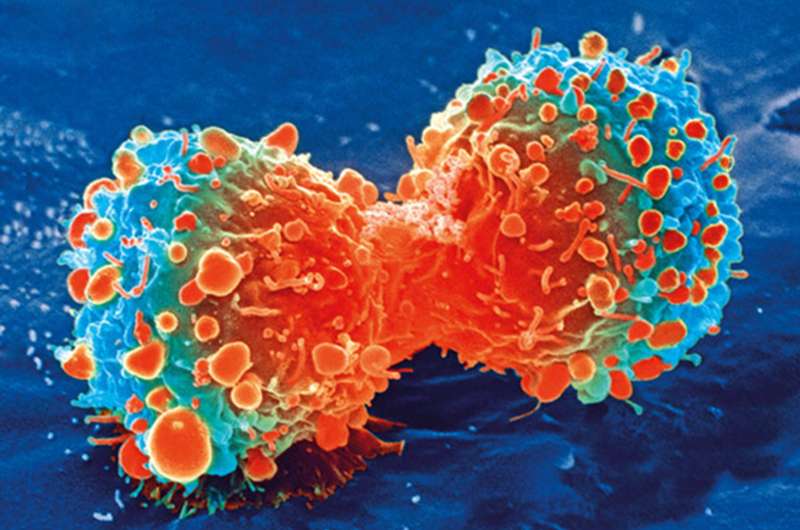
Individuals between 20 and 39 years old experienced the steepest increase in distant-stage early-onset colorectal adenocarcinoma incidence between 2000 and 2016, with the youngest non-Hispanic Black and Hispanic populations experiencing greater proportions of distant-stage disease, according to results from a study published in Cancer Epidemiology, Biomarkers & Prevention.
Early-onset colorectal cancers (EOCRC), defined as those diagnosed in patients younger than 50 years of age, have become more common in recent decades. Understanding the trends and demographics of the rising rates could help improve screening and early detection, explained Jordan Karlitz, MD, chief of the Gastrointestinal Division at Denver Health Medical Center and an associate professor at the University of Colorado School of Medicine. He added that understanding trends in EOCRC stage, including distant-stage disease, which has the highest morbidity and mortality, would help target preventive measures to those with the highest risk.
Prior studies have examined EOCRC rates by grouping together colorectal adenocarcinomas (which are the focus of prevention and screening efforts) and carcinoid tumors, but this strategy may have skewed results in favor of less aggressive stage disease, according to Karlitz. “Rectal carcinoids are quite common and usually much less aggressive than rectal adenocarcinomas, so if you lump these together, it could make EOCRC appear less aggressive than it really is,” he explained.
In addition, Karlitz noted that there are limited data on colorectal adenocarcinoma incidence by stage, an important metric for understanding the severity of disease in younger patients.
In this study, Karlitz and colleagues analyzed annual incidence data included in the United States SEER 18 cancer registry from the years 2000-2016, representing 103,975 patients with colorectal adenocarcinoma. They stratified the incidence data by disease stage, subsite, patient age, and race and calculated the change in incidence rate and change in distant-stage proportions (the percentage of distant-stage disease out of all cancer stages combined) between 2000 and 2016 for various age groups.
Karlitz and colleagues found that the steepest percent increases in incidence rate occurred for distant-stage colorectal adenocarcinomas and were most pronounced for younger age groups. For colon-only distant-stage adenocarcinoma, the steepest increase in incidence rate occurred among patients 30-39 years old, who experienced a 49 percent increase between 2000 and 2016. For rectal-only distant-stage adenocarcinoma, the greatest increase in incidence between 2000 and 2016 occurred among 20-29-year-olds (133 percent increase), followed by 30-39-year-olds (97 percent increase) and 40-49-year-olds (48 percent increase). Corresponding decreases in the incidence of early-stage disease were observed among these subgroups.
In addition to the observed changes in incidence, the researchers also found that younger age was associated with an increased risk for distant-stage colorectal cancer. Patients who were 20-29 years old had a 29 percent likelihood of presenting with distant disease, compared with 20 percent likelihood for 50-54-year-olds.
Distant-stage colorectal adenocarcinoma proportions increased among young patients between the 2000-2002 and 2014-2016 time frames, with the greatest increases observed among 20-29-year-olds (18 percent distant-stage between 2000-2002 vs. 31 percent between 2014-2016) and 30-39-year-olds (20 percent vs. 29 percent) for rectal-only disease.
When the proportions of distant-stage disease were analyzed by race/ethnicity, Karlitz and colleagues found that the largest increases in distant-stage rectal adenocarcinoma proportions from the 2000-2002 to 2014-2016 time frames occurred among 20-29-year-old non-Hispanic Black individuals (0 percent vs 46 percent), 20-29-year-old Hispanic individuals (28 percent vs. 41 percent) and 30-39-year-old non-Hispanic Black individuals (21 percent vs. 33 percent). For colon adenocarcinoma, distant-stage proportion increased most among 20-29-year-old non-Hispanic Black individuals (20 percent distant-stage in 2000-2002 vs. 34 percent in 2014-2016).
“We found that proportions of distant-stage colorectal cancer increased over time in most early-onset subgroups with a corresponding decrease in early-stage disease, and that there is a direct correlation between younger age and the likelihood of presenting with distant-stage disease,” summarized Karlitz. “Although the increasing burden of early-onset colorectal cancer affects all races, these increases seem to be particularly prominent in the youngest non-Hispanic Black and Hispanic subgroups, although absolute case counts remain relatively low.”
These findings highlight the importance of identifying individuals at increased risk for EOCRC and optimizing early detection and screening, Karlitz noted, adding that the results support the recent decision to begin average-risk screening at age 45 instead of 50. “We hope that the results of our manuscript motivate people to get screened on time at age 45 when they become eligible. However, many patients under age 45 will not be eligible for average-risk screening, so it is imperative that we stratify young individuals for early testing based on symptoms and family history,” he said, adding that family history is often overlooked in the care of younger individuals.
“We need to place additional focus on racial subgroups that have an increased tendency to present with distant-stage disease, including the youngest non-Hispanic Black and Hispanic populations, to reverse these trends,” he said. Additional research to understand risk factors underlying the rise in EOCRC and later-stage disease is also needed to better understand those who may be at risk.
A limitation of the study was the use of population-based data from a national registry, which did not include information about the patients’ symptoms or family history.
Source: Read Full Article





